Baked Salmon with Cranberry Relish
This delicious salmon with fresh cranberry relish takes only 30 minutes from start to finish and is a perfect way to balance the holiday flavors and a healthy diet!
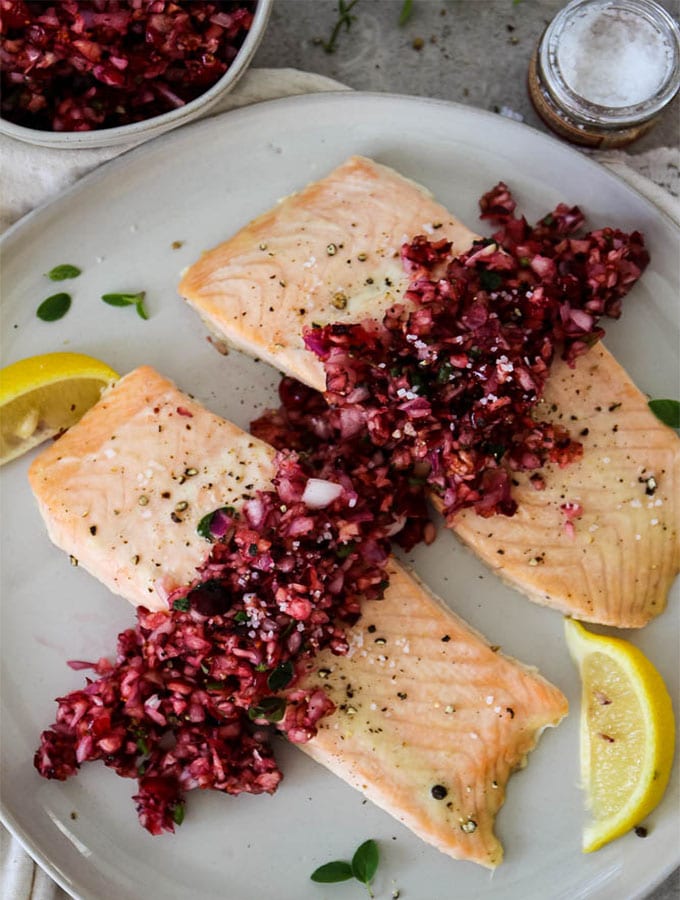
Table of Contents
Easy Baked Salmon with Cranberry Relish
Baked salmon is one of my favorite healthy 30 minute meals. It’s way too easy to slap a little olive oil, garlic, and lemon juice and bake it- done in under 20 minutes. Everyone loves seafood in my house, but baked salmon is definitely a favorite.
Let’s just briefly talk about how healthy baked salmon is! First, it’s packed with omega-3 which is super good for brain healthy (hello exhausted mom brain!), high in antioxidants, vitamins and minerals, and a quality source of protein. Seeing my growing kids gobbling down this baked salmon makes me all sorts of excited. Yay for healthy and easy meals!
The cranberry relish that tops the garlic baked salmon is what really sends this dish above and beyond. The process is so easy. Simply add everything (cranberries, serrano pepper, oregano, and a splash of balsamic vinegar) into a food processor and chop it finely. Fresh cranberries which are in season in the winter are my favorite because they are packed with antioxidants and vitamins! They also help reduce those pesky cold symptoms that make their rounds in the holiday season.
What I like best about baked salmon is that you can switch it up! Blackened salmo with mango salsa gives a sweet and tangy bite. Honey sriracha baked salmon delivers a powerfully delicious punch. Creamy Tuscan baked salmon is a hearty and flavorful classic! If you have time to soak some cedar planks, this wine soaked cedar baked salmon is what dreams are made of!
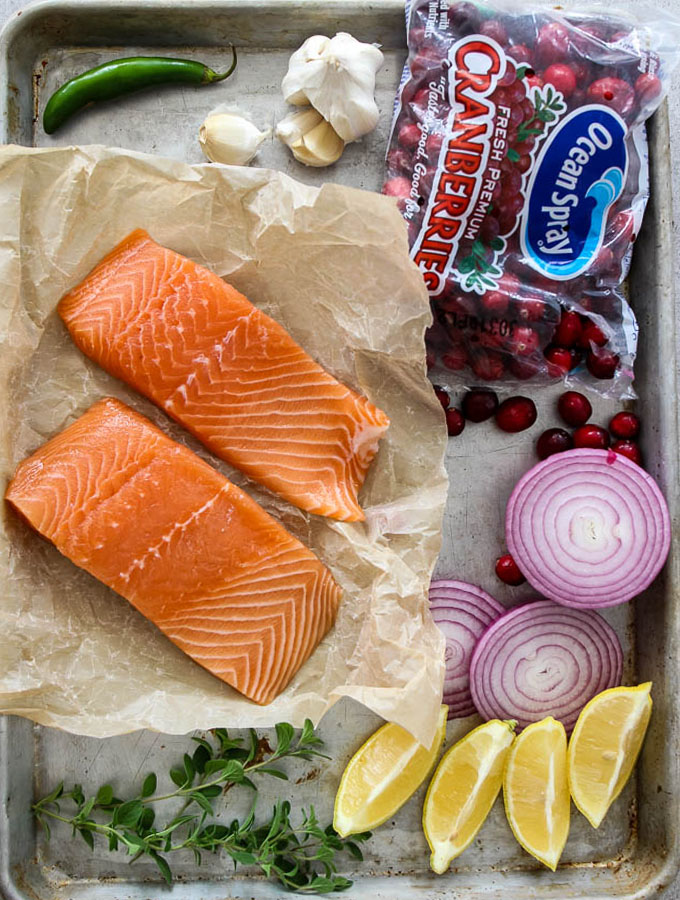
Ingredients for baked salmon
- Salmon filets- Avoid salmon with added colors. Grocery stores will add color to the salmon filets to maintain the look of freshness. Opt for a fresh caught, never frozen salmon, and preferably sustainably fished!
- Raw garlic- every good recipe starts with some raw garlic. I like to think of it as a foodie setting the ambiance.
- Fresh lemon juice- squeezed lemon over baked salmon never gets old. This ingredient was an obvious must!
- Olive oil- Add a little oil to help the garlic lemon puree stick to the salmon filets.
- Salt and pepper- give a pinch of salt and pepper. Seasoning the filet after it has been slathered with a garlic lemon marinade is guaranteed to make you drool.
- Fresh cranberries- we’re really going for a fresh feel for this dish, so fresh cranberries are necessary. Their tart yet floral flavor paired with their gorgeous ruby red color makes for a surprising and intriguing flavor.
- Serrano pepper- seeded with the ribs removed, the serrano pepper is no longer spicy. It simply adds a touch of heat but again, is not spicy.
- Red onion- just a half red onion adds so much flavor to the relish!
- Fresh oregano- oregano has such an earthy and delicious flavor and adds some amazing infection fighting nutrients to this dish.
- Balsamic vinegar- the relish is finished off with just a splash of balsamic vinegar. You can’t taste it much, but it balances the acidity and adds depth. Delish!
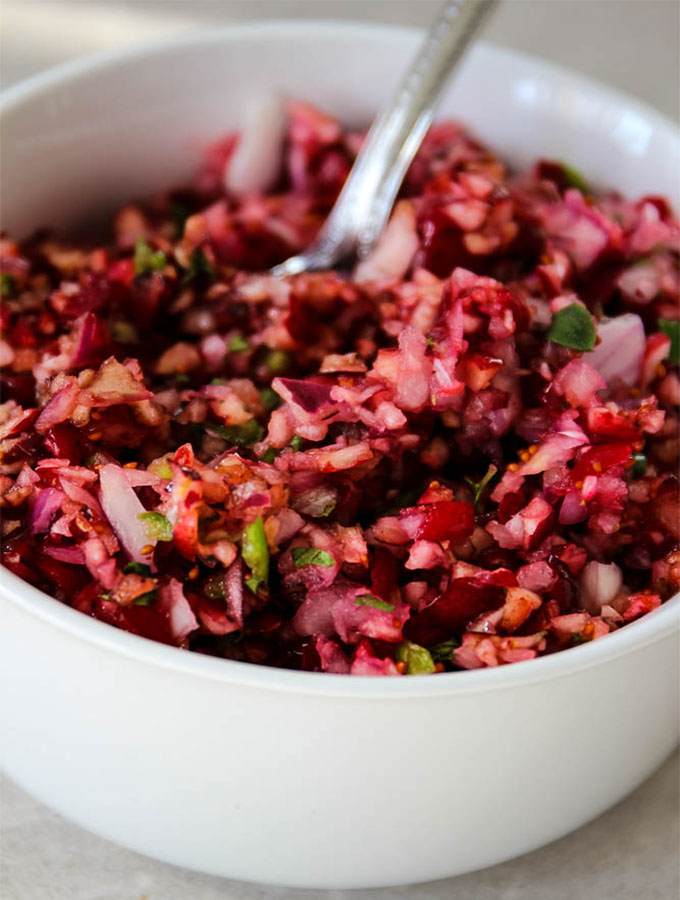
Health benefits
Why is baked salmon healthy?
- Salmon is rich in omega-3, which is a heart and brain healthy fatty acid. It can lower the risk of heart disease, reduce inflammation, lower blood pressure, and help brain function.
- Salmon is a phenomenal source of protein! There is a whopping 40 grams of protein in 0.5 filet! That’s what I call a feast fit for a king.
- Baked salmon is high in selenium and potassium. Both are good for bone growth and health.
- Salmon is also packed with antioxidant astaxanthin. This antioxidant contributes to lowering oxidative stress and improving blood flow.
- Cranberries are high in a specific type of vitamin C, ascorbic acid. This type of vitamin C is good for maintaining skin, muscle and bone health.
- Cranberries are high in potassium, an essential piece to leveling out the negative effects of salt and lowering blood pressure.
Why bake with parchment paper
Baked salmon using parchment paper rather than aluminum foil is a healthier cooking option. Here’s the low down on why you don’t want to cook your food using tinfoil.
Long story short, aluminum is in foods we eat and things we use every day, like corn, salt, herbs, spices, cheeses, cook ware, deodorant, anti-acids, etc.
Cooking with aluminum has proven to be hazourdous. Aluminum was found to leach onto the foods we roast on it. At that point, you are exposing yourself to a potentially higher concentrate of aluminum in your daily intake.
It was recently found that there are high concentrates of aluminum in Alzheimer’s patient’s brains. While our bodies can naturally excrete small amounts of aluminum a day, it’s still best to lower purposeful exposure…because.. brain health.
Baked salmon with parchment paper vs. tin foil is a healthier option because you avoid all the extra aluminum exposure. Parchment paper is just as easy to cook with. Simple place the salmon filets on the parchment paper and bake as you would with tin foil.
Is salmon baked covered or uncovered
If you want the same effect as wrapping the baked salmon in foil, you can fold the parchment paper over the top of the salmon and tie around the filet with some cooking twine to keep it folded. Voila! Baked salmon using parchment paper rather than tin foil.
Salmon can be baked both covered or uncovered. This recipe calls for uncovered since the baking time is short.
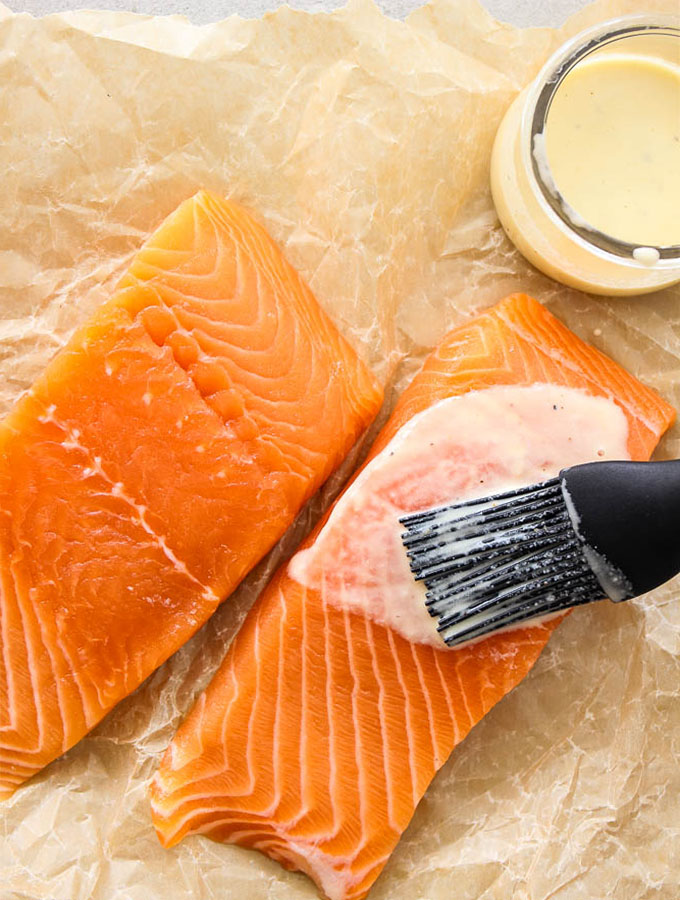
How to bake salmon
- First, preheat the oven to 400 ° F. Toss some garlic, lemon juice, and olive oil into a blender. Blend the mixture until it is pureed.
- Lay the salmon filets on a parchment paper lined baking sheet. Brush the garlic lemon mixture onto the salmon filets.
- Sprinkle a little salt and freshly cracked pepper onto the salmon filets before popping in the oven. Bake for 10-15 minutes, depending on the size. My medium sized filets took 12 minutes to cook.
- While the salmon is baking, go ahead and start to make the relish. Toss the cranberries, quartered red onion, seeded serrano pepper, and a splash of balsamic vinegar into a food processor. Chop until it is finely chopped. Set to the side.
- When the salmon is done baking, top with the cranberry relish and serve with wedges of lime or lemon. Dig in, I know you’re drooling by now!
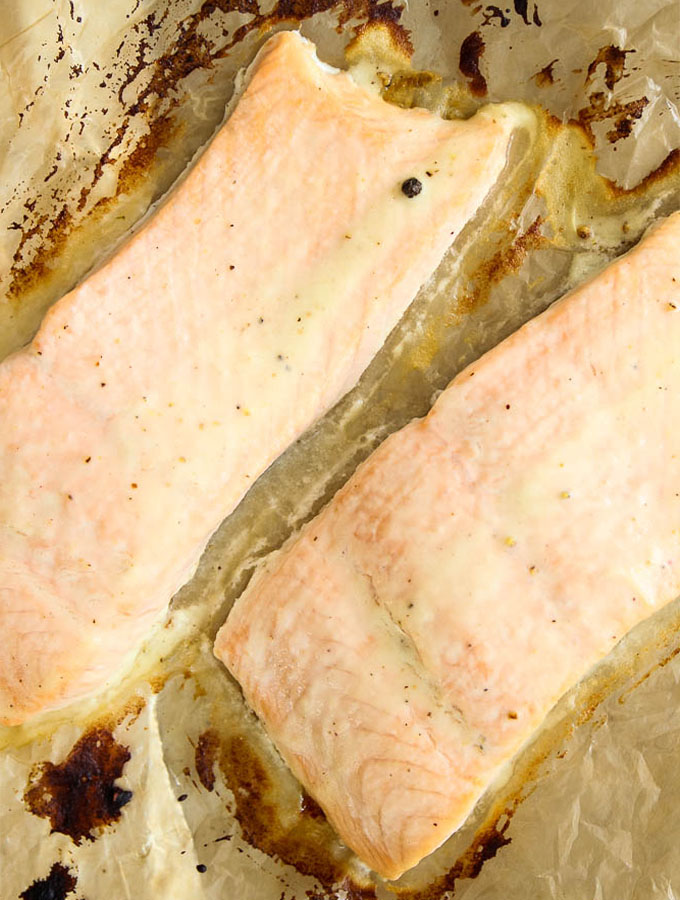
How long to bake salmon in parchment paper for
The cooking time for baked salmon will vary depending on the size. The cooking time can vary by several minutes depending on the thickness of your filet.
Since this recipe calls for filets, the salmon baked for 12 minutes. This created a flaky and moist baked salmon.
If you have a whole 2 lb side of salmon and bake it at 400 ° F, it can take roughly 15-20 minutes.
If you can get your hands on sushi grade salmon like I can at Joe Patti’s (another reason I love Pensacola), you can bake the salmon until you have reached the desired effect. You may just want the outer edges cooked and a pink, translucent center, which is safe to eat because it’s sushi grade.
What temperature should baked salmon be
According to the FDA, fish is safe to consume when cooked to an internal temperature of 145° F / 62.8° C.
What oven temperature to bake salmon at
Different recipes call for different oven temperatures. Why is that? In short, salmon cooks differently depending on the size and temperature of the oven. You will see recipes ranging from baked salmon at 350° F to 450° F. Here’s the low down:
- Smaller fillets (ones around 6 oz.) can withstand higher heat because they cook faster. A higher oven temperature for baked salmon will result in a moist, flaky filet. This recipe calls for the oven to be heated to 400 ° F and a cooking time of 12 minutes.
- Thin salmon filets (about 3 oz.) can be baked at 450 ° F. This can even crisp the edges while producing a flaky and juicy salmon filet.
- Large side filets (around 2 lbs) require a more ‘low and slow’ idea. Heating your oven to 375° F and can vary in time depending on the salmon filet thickness. A rough estimate of cooking time can be between 15-20 minutes.
- Baked salmon can vary in cooking times and temperatures. Store bought salmon usually includes salmon varieties like cohos, sockeye, and farm raised Atlantic. These varieties are usually thinner (about 1 inch in the thickest part) and cook more quickly than a variety like king salmon.
- Here is a great link to understanding the varieties of salmon that are on the market!
How to know when baked salmon is done
There are a few tricks to tell when salmon is done baking. Here are a few ‘tried and true’:
- Use a meat thermometer and check the salmon’s internal temperature. The baked salmon needs to be cooked to an internal temperature of 145° F or 62.8° C. This is the most safe way to determine if salmon is baked properly.
- Use a fork to check is if the salmon is flaky. If the salmon flakes easily with your fork, it’s done.
- Check the salmon’s color. If the color of the salmon filet is translucent, it probably needs to bake for longer. If the salmon meat is opaque with color ranging from deep pink to a light pink, it is ready.
- Check the thickest part of the salmon using a shark knife. Slide your knife into the middle of the thickest area of the salmon and check the texture. If it flakes easily and the salmon looks opaque, it’s ready to eat.
What wine to pair with baked salmon
This baked salmon dish would pair beautifully with a chilled glass of wine! The fresh cranberry relish mixed with a tender salmon filet is already a luxurious (yet effortless) meal, why not add a little pour?
- Pinot Noir– My favorite to pair with any salmon dish is a white Pinot Noir. This red OR white wine has floral and spicy tones, which pairs well with the red onion and serrano pepper in the cranberry relish.
- Oak Aged Chardonnay– A full bodied white wine with hints of vanilla and citrus is a beautiful addition to any fish dish.
- Cabernet Sauvignon- This red wine is deep in flavor with notes of plum, blackberry, spices, and vanilla. This wine would pair beautifully with the tart and floral bite of cranberries.
- White Zinfandel- This pink whine goes well with fish and has light flavors like citrus, floral, and vanilla.
Can baked salmon be reheated
It’s a total myth that fish can not be reheated to eat the next day. While I won’t argue that freshly baked salmon is far superior, next day salmon can either be reheated for a tasty left over or even re-purposed into a new dish.
How to reheat salmon in the oven
Low and slow is the key to reheating salmon. Place the oven on 275° F and bake the salmon on a baking sheet for 12-15 minutes or until the internal temperature reaches anywhere between 125° F- 130° F. Placing the oven on a higher temperature will dry the salmon out.
How to reheat baked salmon in the microwave
Listen, I’m not saying to NOT do it, I’m just saying this is definitely the last option I would take to eating baked salmon. I’d prefer it cold before this method. Microwaving fish can unleash an unruly aroma of second day fish that no one enjoys. It can also dry the salmon out and crisp the edges.
If you really need to, pop the salmon in the microwave for just a minute or two, and cover the dish with another plate, lid, or plastic to help contain the smell.
How to reheat salmon in a skillet
Bring the salmon to room temperature. Heat a medium cast iron pan over medium low heat. When the pan is hot, add the salmon filet and 2 TBS of water. Cover the pan with the lid, and let it cook for 2-5 minutes, until heated through.
Can cooked salmon be eaten cold
Eating cold baked salmon is super delicious and it’s a great way to ensure it will not dry out from reheating. Toss some cold salmon on a sandwich or a salad and mangia!
Should you bake salmon with skin on or off
Baked salmon is delicious with the skin on or off.
- Baked salmon with the skin on has extra benefits like a more moist and tender filet. The fatty skin locks in more moisture in the salmon, which means a better texture.
- The skin comes off easily if you choose to bake your salmon with the skin on. You can easily slide a spatula between the skin and the salmon filet, or you can eat the salmon meat off the skin on your plate. The baked salmon will separate easily from the skin.
- You can ask the seafood counter if they will remove the skin if that sounds more pleasant to you. The skin is not a necessary piece to baking salmon.
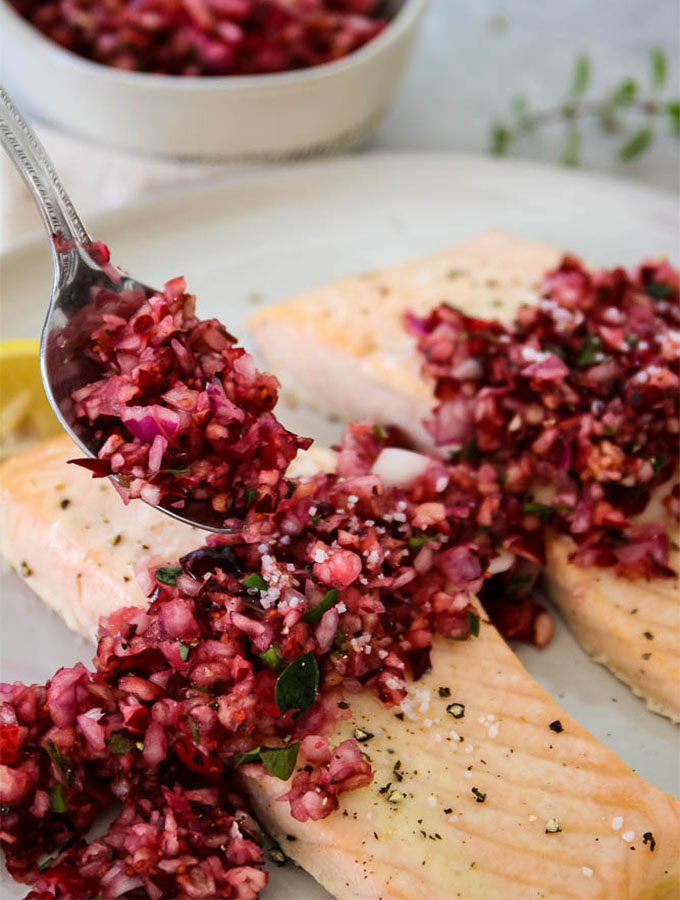
Can you feed salmon skin to dogs
I had to include this because those who know me know that I am an animal guru. I am tagged in just about every single animal meme this internet has to offer. My dachshund, Harvey, eats like a king, which mostly consists of healthy recipes right off this blog! Obviously, I had to quickly google if I could throw him all this nutrient dense salmon skin.
Salmon, to include the skin, is safe for dogs to eat when properly prepared and cooked.
This includes removing all the bones from the salmon and cooking to the FDA recommended cooking temperature of 145°F. There! The more ya know!
How long is cooked salmon good for
how long does salmon stay good in the fridge for
Salmon can stay in the fridge for two days. Baked Salmon can be reheated or eaten cold.
Can baked salmon be frozen and reheated
Baked salmon can be frozen in an airtight container and stored for up to 2 months. To defrost the salmon, place it in the refrigerator overnight to thaw. The salmon texture may be more on the mushy side.
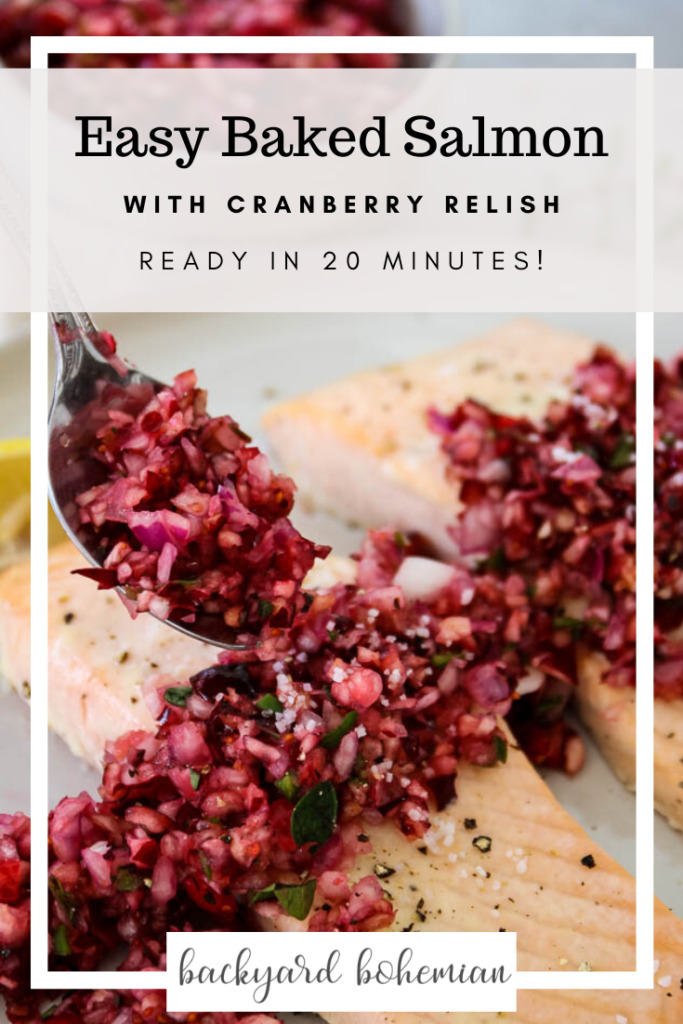
Be sure to follow me on Facebook, Pinterest, and Instagram to stay in touch! I love to see your creations! Tag me at #SeaSaltSavorings to show me what you’ve made!
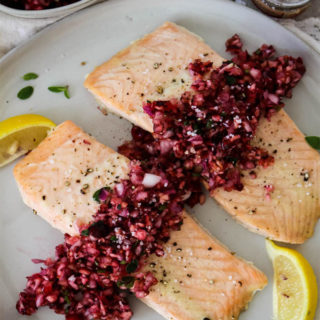
Baked Salmon with Cranberry Relish
Equipment
- food processor
- brush
- small blender
Ingredients
- 2 lb salmon filets
- 1 TBS olive oil
- 1 lemon squeezed
- 3 cloves of garlic
- pinch of salt and pepper
For the Cranberry Relish
- 2 cups fresh cranberries
- 1/2 medium sized red onion
- 1 serrano pepper seeded
- 1 TBS fresh oregano
- 1 TBS balsamic vinegar
Instructions
- Preheat the oven to 400°F. Line a baking sheet with parchment paper.
- Using a small blender, combine the squeezed lemon juice, garlic cloves and olive oil. Blend until the mixture is pureed. Lay the salmon filets on the baking sheet. Use a brush to spread the garlic and lemon mixture onto the salmon filets. Sprinkle a little salt and fresh cracked pepper over the salmon.
- Place the salmon in the oven and bake for 10-15 minutes, depending on the size of the filets. The internal temperature of the salmon will be 145°F when fully cooked.
- While the salmon is baking, prepare the cranberry relish. Combine the cranberries, half of a red onion, seranno pepper*, fresh oregano and a splash of balsamic vinegar in a food processor. Blend until finely chopped and set to the side.
- When the salmon is done baking, plate the salmon (your choice if you want to remove the skin or not!), then top with the cranberry relish. Serve with wedged of lemon and more fresh herbs. Mangia!
Notes
Nutrition values are estimates, for exact values consult a nutritionist.

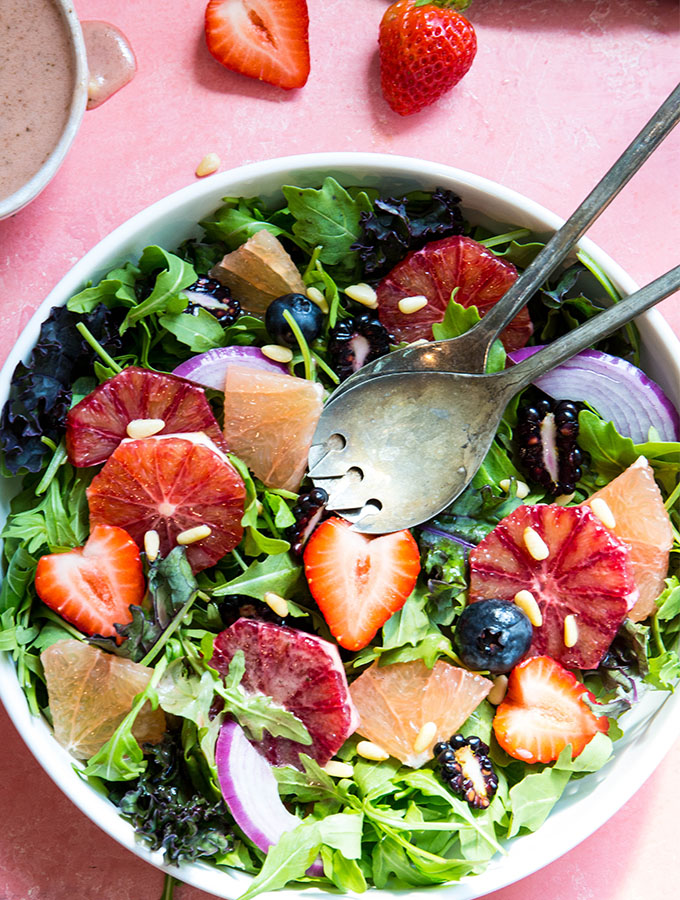

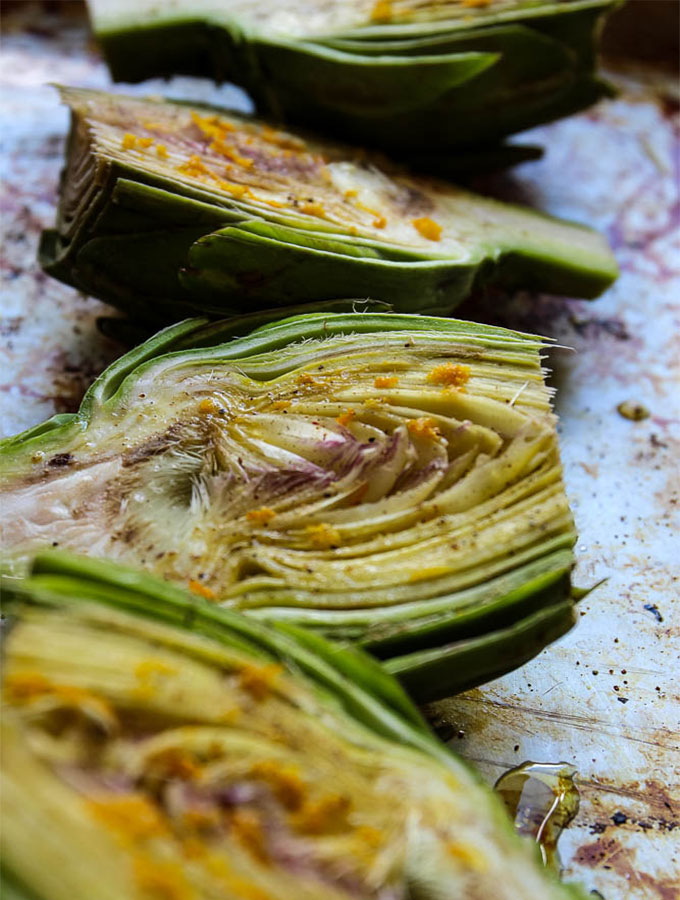
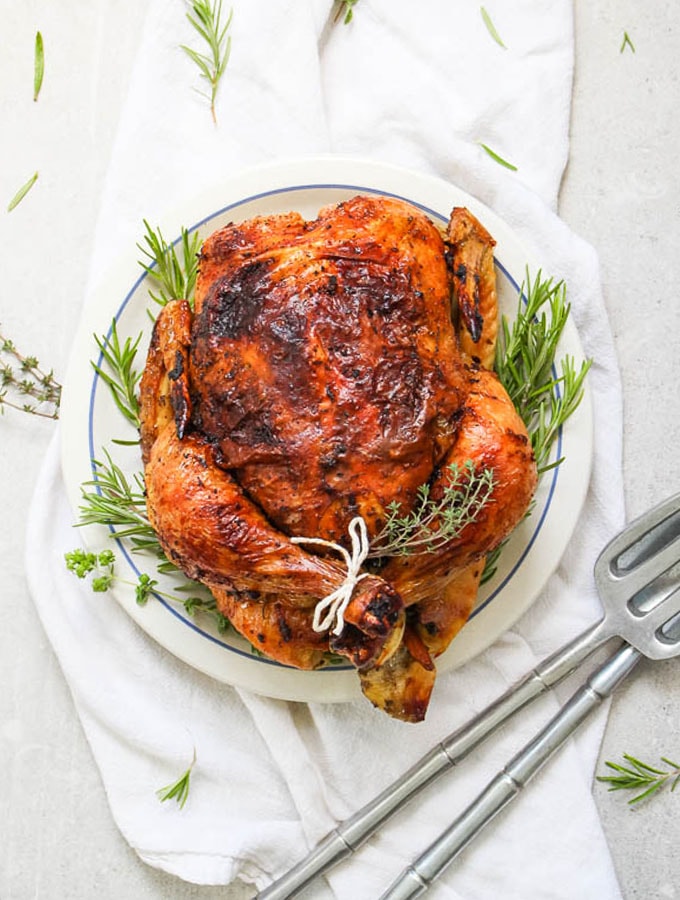

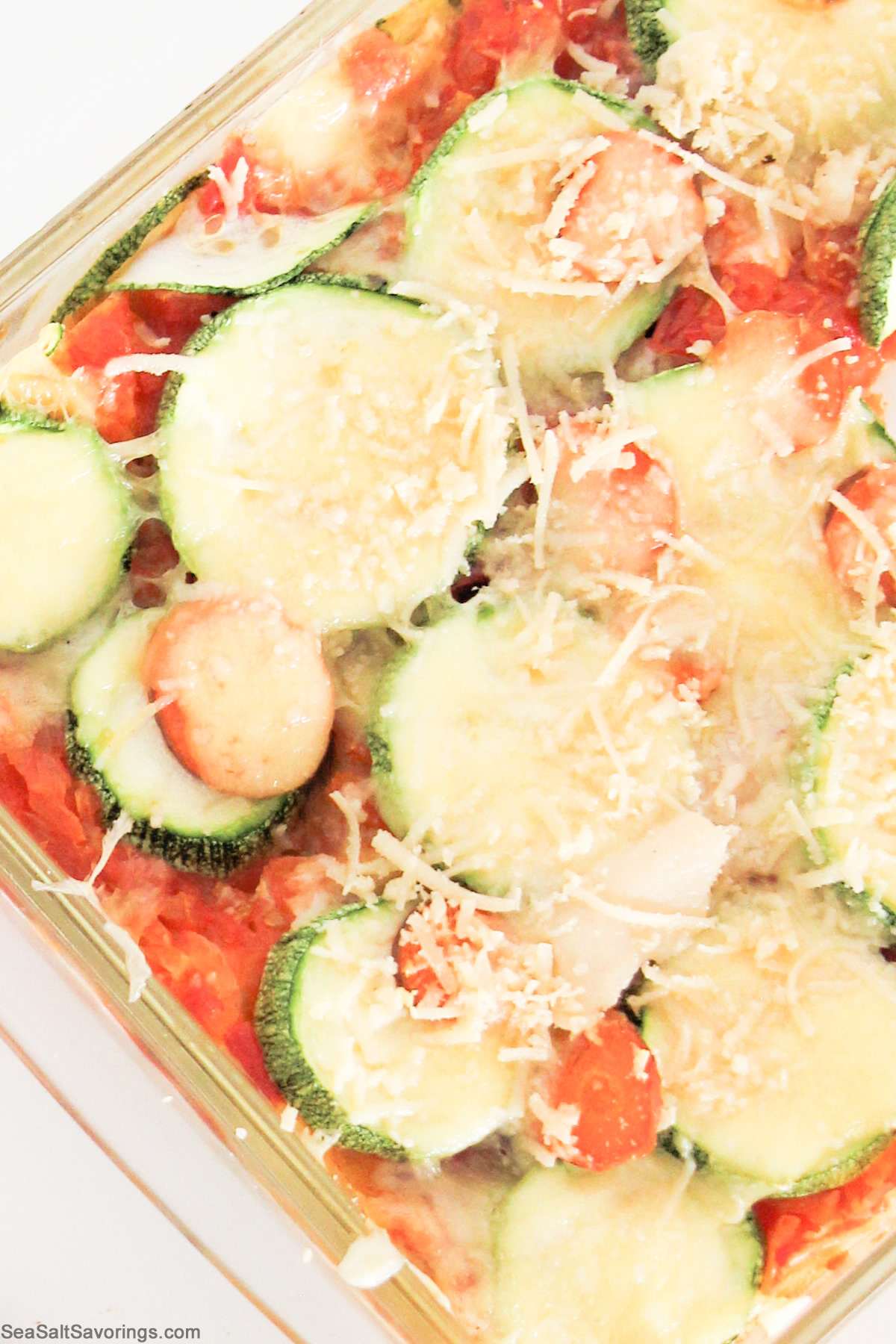
We actually tried this during lunch and this really taste so good! Thank you so much for sharing!
I am so glad you enjoyed it! It’s a fun flavor to try!
Omg Sherry! This looks amazing!!!! As you know I don’t eat seafood but my Mother loves it! Especially salmon!!! I will be sure to pass this along to her and my stepfather! Thank you so much for this wonderful recipe! ❤️
I hope they enjoy it! Much love to you!